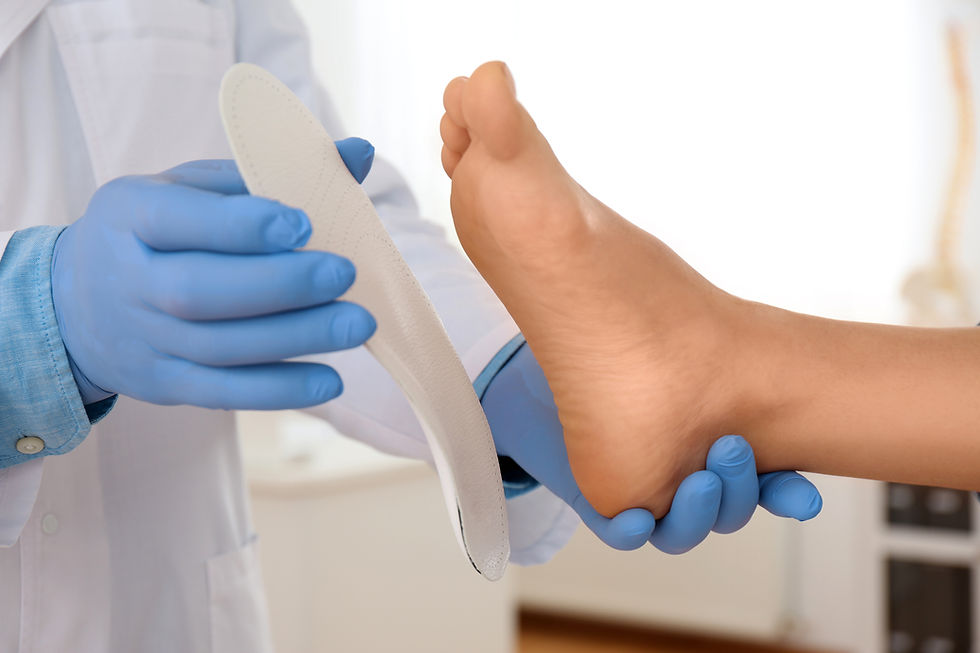
Introduction
The orthotic industry is undergoing a remarkable transformation thanks to the revolutionary impact of 3D printing technology. Traditionally, orthotics – custom-designed medical devices that support and correct various musculoskeletal conditions – were laboriously handcrafted, often resulting in prolonged lead times, discomfort for patients, and limited design options. However, 3D printing is changing this landscape dramatically, offering unprecedented advantages and opportunities for both patients and orthotic practitioners. Here's how 3D printing is revolutionizing the orthotic industry:
Customization & Personalization
3D printing enables the creation of orthotic devices with an unparalleled level of customization. By utilizing precise digital scans of a patient's anatomy, orthotic practitioners can design and produce orthotics tailored to the individual's unique needs. This customization ensures a better fit, improved comfort, and enhanced therapeutic outcomes. Whether it's orthotic insoles, braces, or prosthetics, 3D printing allows for precise adjustments to meet specific biomechanical requirements.

Rapid Prototyping & Iterative Design
3D printing accelerates the prototyping and design iteration process in orthotics. Design adjustments that would have taken days or weeks using traditional methods can now be implemented within hours. This iterative approach not only speeds up the production timeline but also enables orthotic practitioners to fine-tune designs based on patient feedback and real-world testing. As a result, patients receive devices that are finely tuned to their needs, enhancing comfort and effectiveness.

Complex Geometries & Lightweight Structures
Orthotic devices often require intricate geometries to address specific conditions. 3D printing excels at producing complex shapes and lightweight structures that are not easily achievable through traditional manufacturing techniques. This allows for the creation of orthotics that are anatomically accurate, biomechanically optimized, and aesthetically pleasing. Patients can benefit from lightweight, unobtrusive devices that seamlessly integrate into their daily lives.

Reduced Lead Times
3D printing significantly reduces lead times in the orthotic manufacturing process. What used to take weeks can now be accomplished in a matter of days. This rapid production cycle is particularly crucial in cases where patients require urgent orthotic intervention. Furthermore, 3D printing's digital nature eliminates the need for time-consuming manual labor, leading to quicker turnarounds and more efficient orthotic care.

Enhanced Collaboration & Accessibility
3D printing facilitates collaboration among orthotic practitioners, clinicians, and engineers. Digital designs can be easily shared, reviewed, and modified, allowing experts from different fields to collaborate remotely. This accessibility promotes knowledge sharing, best practices, and innovation within the orthotic community, ultimately benefiting patients with improved treatment options.

Improved Patient Engagement
3D printing empowers patients to actively participate in their orthotic care. Through visualizations of digital designs, patients gain a deeper understanding of their condition and the proposed treatment. Additionally, patients can provide real-time feedback during the design and fitting process, fostering a sense of ownership and engagement in their orthotic journey.

Scalability & Cost-Efficiency
As 3D printing becomes more mainstream, the orthotic industry benefits from economies of scale. Mass customization becomes feasible without sacrificing quality. This scalability reduces per-unit production costs, making advanced orthotic solutions more accessible to a wider range of patients.

Conclusion
In conclusion, 3D printing is revolutionizing the orthotic industry by offering unparalleled customization, rapid prototyping, intricate designs, reduced lead times, enhanced collaboration, and improved patient engagement. As this transformative technology continues to evolve, orthotic practitioners and patients alike can look forward to a future where orthotic care is more effective, efficient, and patient-centric than ever before.
At Additive Hub, we provide production services for the Orthotic industry using our SLS (Selective Laser Sintering) & MJF (Multi-Jet Fusion) technologies. Visit our Materials page to learn more about all different materials, and feel free to get in touch to discuss your 3D Printing project. Contact: info@additivehub.com.au
Thanks for reading and stay tuned for more upcoming posts!

Comments